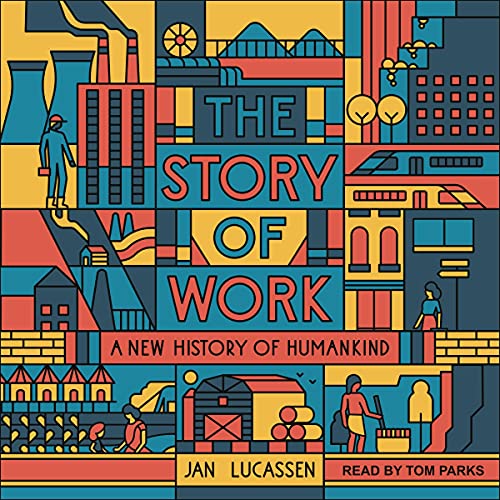You have /5 articles left.
Sign up for a free account or log in.
 The Story of Work: A New History of Humankind by Jan Lucassen
The Story of Work: A New History of Humankind by Jan Lucassen
Published in August 2021 (Yale University Press)
Much is being written on how COVID-19 has changed work. Comparatively little is being written on how the pandemic has changed academic work.
Perhaps the reason for a relative dearth of analysis of the future of the university as a place of work is that few universities talk publicly about workplace issues. When given a choice, most higher education institutions would prefer to speak about the students they educate and the research they produce rather than the people (especially staff) they employ.
The reality is that while the university exists to educate students and create knowledge, it is also (or has been) a physical place of employment. Postsecondary institutions employ nearly four million people. How has COVID changed how these four million people will work in the future?
One way to begin to think about the future of academic work is to build as broad a base as possible in understanding the history of all work. It is in that spirit of wanting to think broadly about how higher education might change as a workplace that I read (well, listened to) labor historian Jan Lucassen’s (22-hour-and-12-minute) The Story of Work.
This is a book that attempts to tell the whole story of work. Starting from hunter-gatherers, moving through the invention and spread of agriculture, surveying the transition to industrial work and manufacturing, and finally ending in the emergence of knowledge work and the service economy—The Story of Work is nothing if not complete.
Some of the themes from this global narrative of the history of work that may help illuminate the post-2020 coronavirus outbreak future of academic work include:
Change comes more slowly than we might think.
What stands out from spending 22 hours listening to The Story of Work is how much about work did not change. Specialization and wage work have long pre-industrial roots. The nature of work changed dramatically between the large-scale shifts from agricultural to industrial to post-industrial economies. However, within these epochs, change has come more slowly. The patterns of how work is organized seem to be sticky and resilient to external shocks.
For higher education as a workplace, the history of working may teach us that our established employment arrangements may be more durable than we’d expect. Rather than expansive stepwise changes in how academic work is accomplished, the future may reflect the more gradual and evolutionary changes that seem to characterize the broader shifts in work.
The social aspect of work has always been strong.
The Story of Work spends considerable time describing the parts of work that go beyond narrow economic factors. For those working outside the home, work has long retained a social element. Workplaces of all types have been characterized as much by solidarity and companionship as paychecks.
If it is true that the deep basis of work is as much social as productive, then it is fair to ask how hybrid academic work might impact the strength of interpersonal collegial connections. How might the social bonds between those who work together at a university be built and maintained as collaboration moves from in person to Zoom? What might universities do to integrate remote employees into the social fabric of the campus culture?
We should be skeptical of claims that the future of work will be hugely different from the present.
A final theme relating to academic work that I take from The Story of Work is to be skeptical about big claims of future change. This is partly because changes in how work works, and feels to those doing the work, seem to come gradually. This is also because the nature of work does not change in either a linear or predictable fashion.
Humans have never been very good at predicting what work will be in the future, from the jobs that will be done to the time spent doing that work. The historical difficulty in looking forward should give us pause in overconfident predictions about where academic work might be going.
Higher education likely has a once-in-a-generation opportunity to rethink how we do our work. Investing time in reading The Story of Work can help us place our efforts to redesign the university as a workplace within its much larger historical context.
What are you reading?








